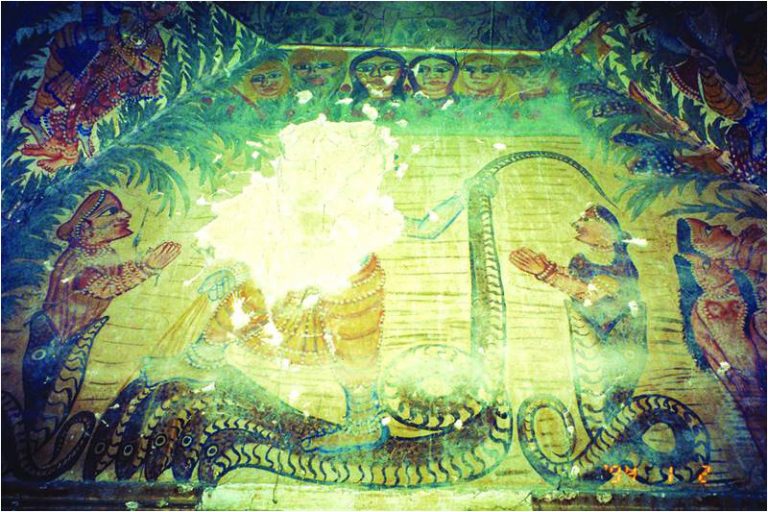
Located in the heart of Johi town, the Hindu temple is conspicuous for its tall shikhara (superstructure) from a distance. The square shikhara of the temple is adorned with images of Hindu deities.
Zulfiqar Ali Kalhoro
Dadu district in Sindh is home to a number of historic temples which are noted for wooden painted ceilings, carved wooden doors, intricate wooden balconies and painted walls and ceilings. Most of these temples have now been renovated. The walls were whitewashed, ornately carved wooden doors were removed and now gaudy china ceramics decorate the walls and floors of Hindu temples in Dadu and other towns in the district. Apart from Dadu town, there are some Hindu temples in Mehar and Johi towns which still retain their original beauty. Although some renovation in the Thanwar Das temple in Mehar town has destroyed the precious mural paintings, it has retained the wooden carved doors and balconies whereas the Johi temple, albeit in a bad state of preservation, features some surviving mural paintings.

Located in the heart of Johi town, the Hindu temple is conspicuous for its tall shikhara (superstructure) from a distance. The square shikhara of the temple is adorned with images of Hindu deities. Traces of paintings are also visible on the shikhara. The domed mandapa of the temple was also adorned with images of Hindu deities but most of these have disappeared now. Episodes from Bhagavata Purana, Gita Govinda and Ramayana are painted on the walls and ceiling of garbhagriha (innermost sanctum) of the temple.
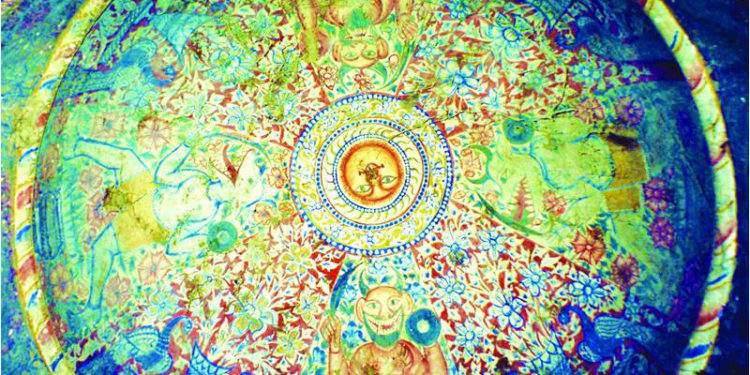
The ceiling of the garbhagriha is painted with floral and peacock motifs. It also depicts demons. There are four main panels with associated smaller panels on the four walls of the garbhagriha. The first panel shows Krishna subduing the hydra-headed serpent Kaliya whose poison has befouled the River Jumna. Krishna, having defeated Kaliya, is dancing in triumph on its sagging heads. This is called Krishna’s Tandava dance. This theme has been taken from the Bhagavata Purana. The consorts of serpent Kaliya are also shown pleading for mercy. The depiction of Krishna has been defaced in the temple.
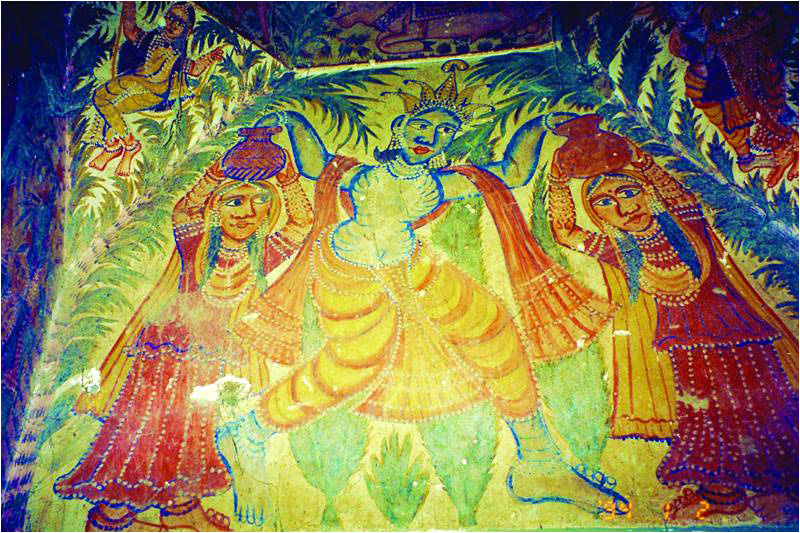
The Krishna Tandava dance was one of the favorite themes of Sindhi painters and wood carvers. In fact, this theme of Krishna subduing the Serpent Kaliya appeared on the wooden doors of temples and darbars of Shikarpur, Jacobabad, Nasirabad, Sukkur, Rohri, Larkana, Khairpur, Hyderabad and Shahdadpur. But unfortunately, most of the wooden doors of temples and darbars were removed during renovation of these sites. Quite a few such wooden doors have survived, of which the wooden door in the Thanwar Das temple in Mehar town is prominent. In fact, Krishna’s Tandava dance is beautifully carved on the wooden door of the Thanwar Das temple.
The Krishna Tandava dance was one of the favorite themes of Sindhi painters and wood carvers
Close to the painting of Krishna’s Tandava dance in the Johi temple is another smaller panel which shows “Cheer Harana” as a Lila (cosmic play) of Krishna. In it, Krishna steals the clothes of gopis and sits on a tree. The gopis are shown pleading with him to return the clothes. This Lila of Krishna is also painted in some other temples in Sindh. It is also represented in the wooden doors of temples and darbars of Sindh.
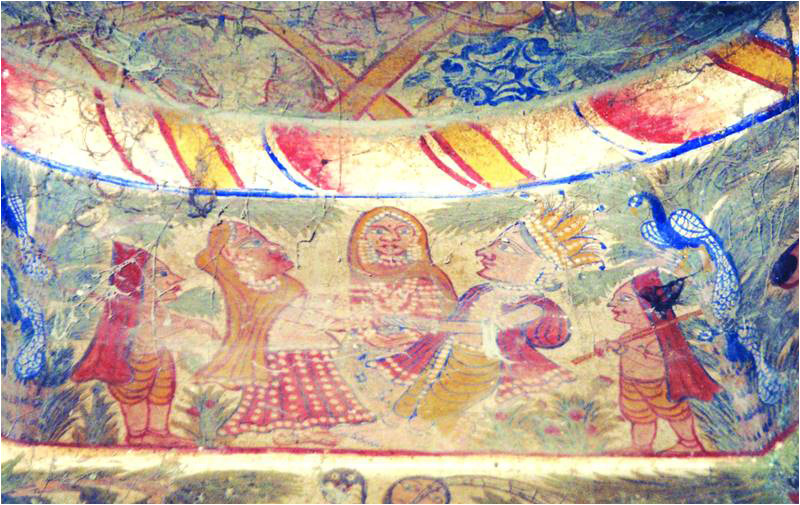
The second panel in the temple shows the Daan Lila of Krishna. In this Lila, Krishna is depicted collecting a toll of butter from the gopis. According to Hindu mythology, the gopis of Brij were exporting raw butter to the court of Kansa at Mathura for his use and that of his demons, depriving the youth of Brij. In order to stop the export of raw butter to the court of Kansa at Mathura, Krishna posted himself and a team of gopas (cowherd boys) on the way to Mathura and forced the gopis to give them a share – willingly or unwillingly. Above this panel are representations of cows and gopis. The gopis are shown playing on swings. On four corners of the garbhagriha are numerous paintings of gopis on swings. Some depictions of nymphs are also found in the corners of the garbhagriha.
Apart from the Johi temple, the Daan Lila is also painted in other temples in Sindh. It is represented in wooden doors of the temples. The best wood carvings of the Daan Lila are probably to be found in the Thanwar Das temple in Mehar town and the Jai Shankar temple in Larkana city. A wooden door in the Jai Shankar temple was purchased from Jacobabad, when it was removed during the renovation of the temple. It was reused in the Jai Shankar temple in Larkana.
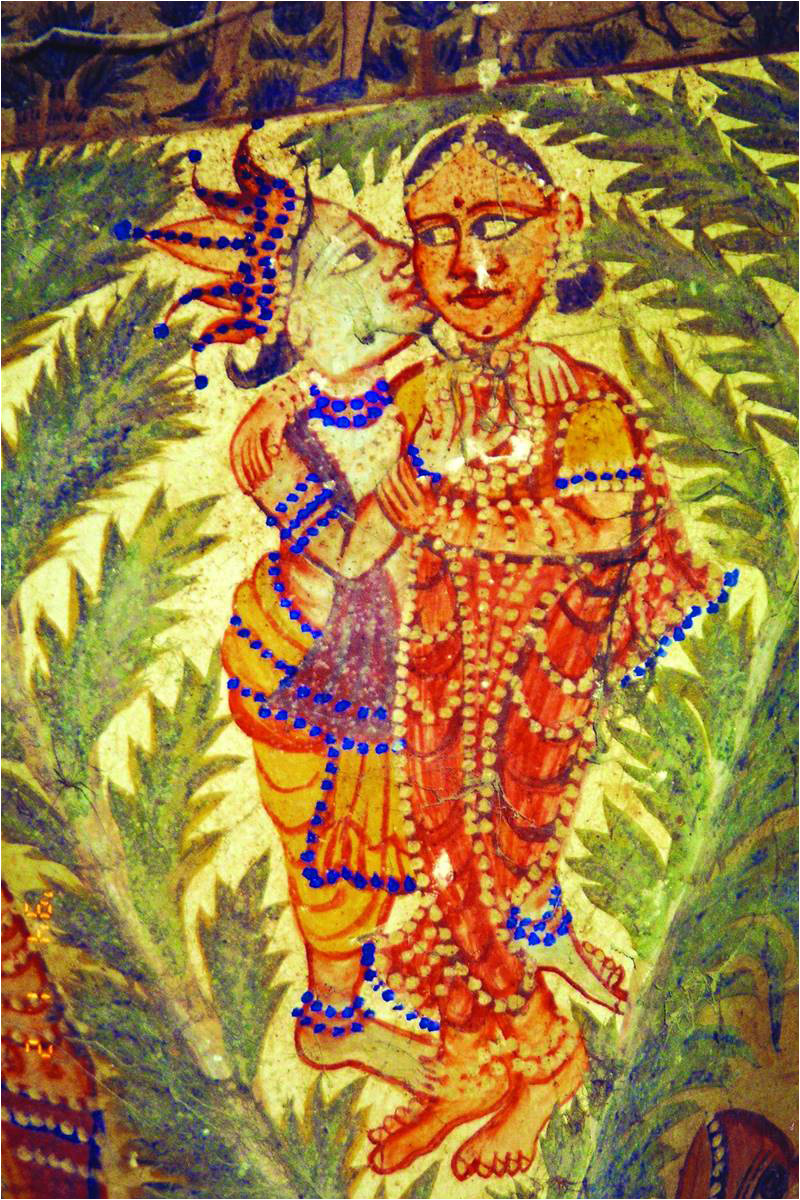
The third panel shows Krishna with gopis. On either sides and above this panel are paintings of gopis who are shown holding roses for Krishna. Just above this panel is another smaller panel that shows Krishna in a dalliance with Radha. This is a most interesting painting as Radha appears taller than Krishna.
The fourth panel shows Shiva with Parvati and Ganesh. On the left side of this depiction is a painting of a snake-charmer. Above this painting is a smaller panel which depicts Krishna dancing with Radha accompanied by gopas and gopis.
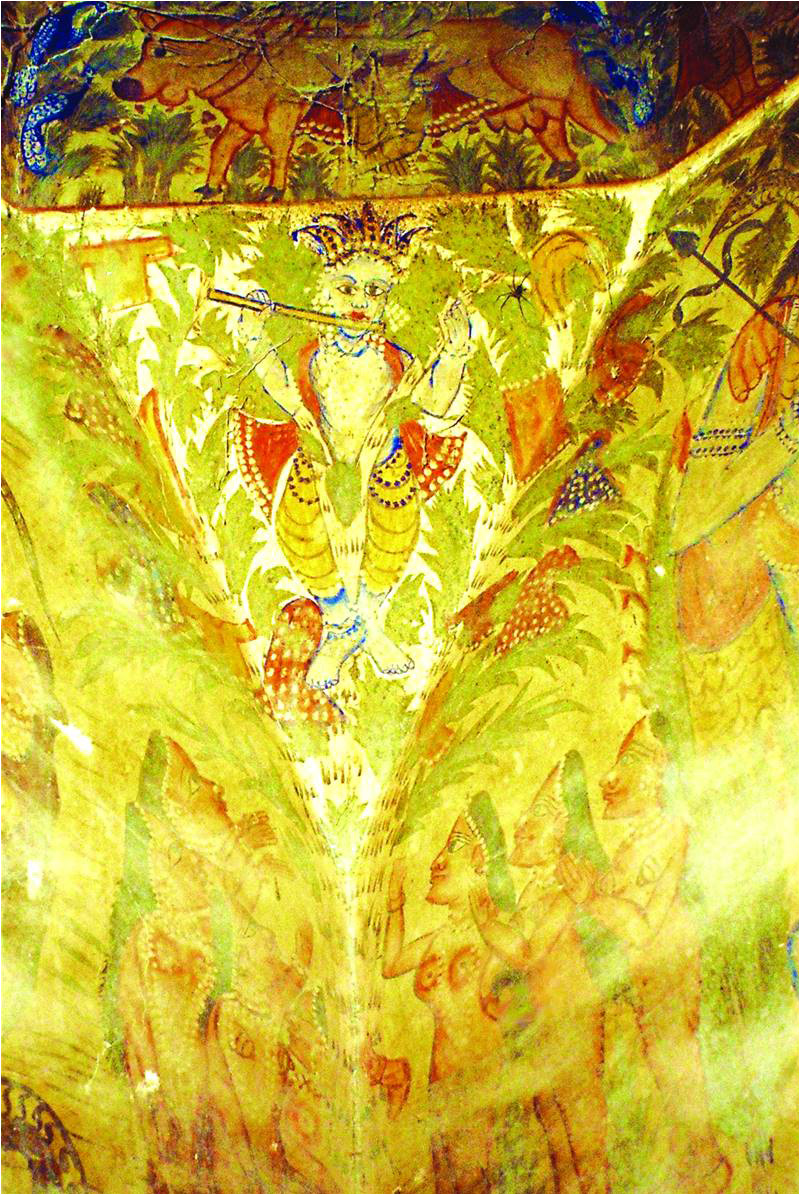
These mural paintings appear to have been made in either in 1920s or 1930s as most of them do not appear very highly refined. But they are, nevertheless, precious paintings – priceless aspects of our heritage which should be preserved before they disappear.
Johi has the only temple in the whole of Dadu district which depicts such impressive mural paintings taking themes from the Bhagavata Purana, Gita Govinda and Ramayana.
The Directorate of Antiquities and Archaeology at the Culture, Tourism, Antiquities & Archives Department, Government of Sindh, or the Endowment Trust for the preservation of the heritage of Sindh (EFT), should restore this temple. During this process of restoration, it should be ensured that the paintings are not damaged, as they are vital aspect of the material culture of colonial-era Sindh.
_________________
 Zulfiqar Ali Kalhoro is an anthropologist and author of 12 books including ‘Symbols in Stone: The Rock Art of Sindh’, ‘Perspectives on the art and architecture of Sindh’, ‘Memorial Stones: Tharparkar’ and ‘Archaeology, Religion and Art in Sindh’. He may be contacted at: zulfi04@hotmail.com
Zulfiqar Ali Kalhoro is an anthropologist and author of 12 books including ‘Symbols in Stone: The Rock Art of Sindh’, ‘Perspectives on the art and architecture of Sindh’, ‘Memorial Stones: Tharparkar’ and ‘Archaeology, Religion and Art in Sindh’. He may be contacted at: zulfi04@hotmail.com
Courtesy: The Friday Times Lahore